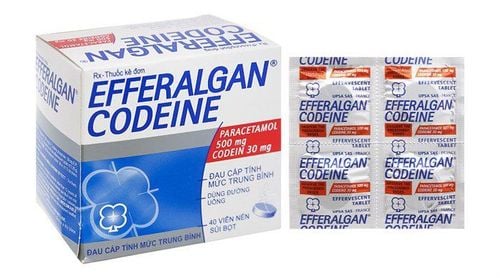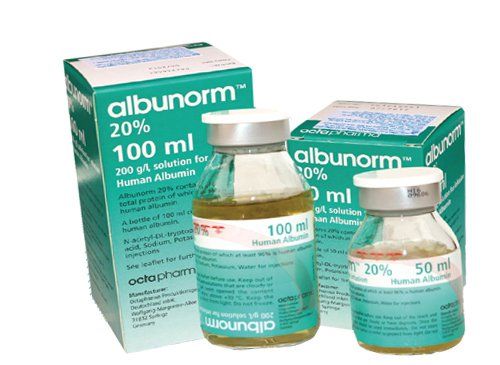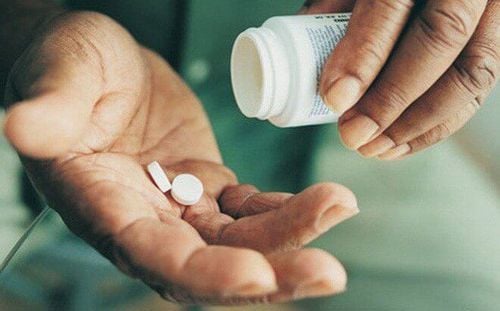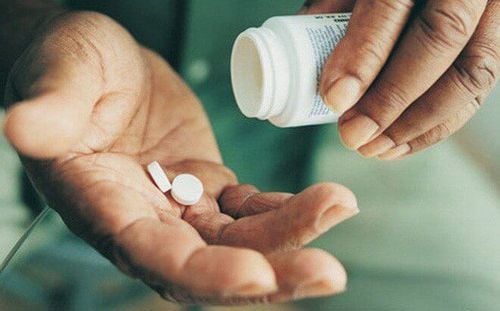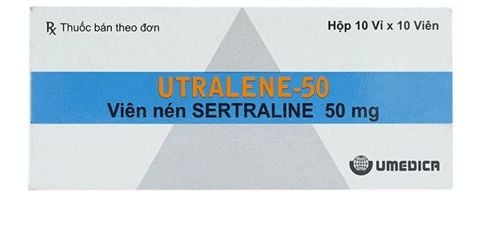This is an automatically translated article.
Albiomin 20% drug has the main ingredient Human Albumin. This is a drug used to treat hypovolemic shock, an adjunct in hemodialysis for patients undergoing long-term dialysis or for those hospitalized and overloaded, unable to tolerate large amounts of saline. in the treatment of shock or hypotension and in cardiopulmonary bypass surgery.
1. What is Albiomin 20% drug and what are its effects?
The main ingredient of Albiomin 20% infusion solution (200g/l) is Human Albumin. Albumin is a protein produced in the liver that circulates in the blood plasma and plays an important role in maintaining plasma oncotic pressure. In addition, Albumin is also effective in transporting substances with small molecules in the body, such as bilirubin, fatty acids, hormones or drugs when entering the body.
Albiomin 20% solution is prepared from whole blood containing soluble proteins and electrolytes but without clotting factors, blood group antibodies or plasma cholinesterases, so it can be given to patients. regardless of the recipient's blood type.
The therapeutic effect of Albiomin 20% infusion is the effect on the colloid osmotic pressure of the plasma. Albumin has a role of up to 60-80% in ensuring the oncotic pressure in the body, not letting blood out of the vessel too much. Therefore, the active ingredient Albumin is used to replace blood volume loss due to trauma such as severe burns, trauma causing blood loss or other cases of blood loss.
If the recipient is transfused into the blood 1g Albumin can increase the circulating plasma volume to about 18ml. This added amount of Albumin reduces the hematocrit and blood viscosity. However, it should be noted that albumin preparations do not have clotting factors, so they will not affect the body's clotting mechanism or increase blood clotting in the body.
Albumin is distributed in the extracellular fluid, over 60% is located in the extravascular space. The average duration of action was only about 15 minutes after the injection or infusion of Albiomin 20%, which increased the blood volume for the recipient with adequate hydration. The duration of action of the active ingredient Albumin depends on the patient's initial blood volume. If the blood volume is reduced, the time to increase the blood volume will also last for a longer time up to several days, if the blood volume is normal, the duration of the effect will be shorter. The average elimination time is about 15-20 days.
2. Indications of Albiomin 20%
Albiomin 20% is indicated for use in the following cases:
Emergency treatment of shock caused by hypovolemia that other methods are not effective enough. Prophylaxis of hemoconcentration, dehydration and electrolyte loss in severe burns. In cases of hypoproteinemia, especially associated with excessive loss of Albumin. In combination in exchange transfusion for the treatment of hyperbilirubinemia in hemolytic disease of the neonate. In combination for blood dilution in cardiopulmonary bypass surgery and in adult respiratory distress syndrome (in cases where pulmonary capillary permeability is not greatly increased). Albumin preparations or Albiomin infusion 20% of people have no role in the treatment of nephrotic syndrome with renal failure, chronic liver cirrhosis, and nutritional deficiencies, although there is a decrease in albumin in the blood. Use medications and fluids as prescribed by the treating physician.
3. Undesirable effects of the drug Albiomin 20%
Less common mild reactions such as fever, hot flushes, itching and nausea. In some cases, tremor, erythema, vomiting, hypotension, dyspnea, tachycardia. This reaction disappears after the infusion rate is reduced or the infusion is stopped. Very rare anaphylaxis. When anaphylaxis occurs, the infusion should be discontinued and appropriate therapeutic measures instituted. If you see any side effects, you need to immediately notify your treating doctor or qualified pharmacist for timely treatment.
4. Usage and dosage of Albiomin 20%
4.1 Albiomin dosage 20% (200g/l) Albiomin 20% drug concentration must be adjusted to suit each individual patient. The dose of Albumin depends on the clinical condition and individual response and is determined by monitoring central venous and pulmonary arterial pressure during use to avoid excessive volume expansion. blood. Albumin infusion rate is 1 - 2 ml/min (5% solution) or 1 ml/min (25% solution), in the treatment of shock can increase the infusion rate. Do not infuse more than 250g/48 hours. If it is necessary to use this dose, the doctor will prescribe plasma replacement. Dosage reference is as follows:
In case of acute hypovolemic shock:
Initial dose for adults is 25g Albumin (500ml 5% solution or 100ml 25% solution) and for children: about 1g /kg. If necessary, repeat a dose after 15 to 30 minutes. If bleeding is present, a whole blood transfusion may be required. In case of hypoproteinemia: The maximum dose is 2g/kg body weight/day.
In case of burns:
Dosage and duration of treatment, depending on the area of the burn, should be sufficient to restore plasma volume and reduce hemoconcentration. Infuse 500 ml of 5% Albumin solution or 100 ml of 25% solution with other electrolyte solutions. Non-emergency burn treatment for children: use 6.25g - 12.5g.
When hyperbilirubinemia in neonates: Transfusion of 1g/kg body weight before transfusion or Albumin at a dose of 1.5 - 2.5g/100ml of blood can also be supplemented with transfusion solution. . 4.2. How to use Albiomin 20% The rate of infusion is adjusted depending on the needs of each different person.
Before and during treatment with Albiomin 20% solution, it is necessary to fully determine the following blood circulation and hemodynamic parameters: central venous blood pressure; pulse, arterial blood pressure; urine output; Pulmonary arterial blood pressure and Haematocrit/haemoglobin indexes.
The route of drug administration is as follows:
Use directly intravenously or dilute in isotonic solution (such as 0.9 % physiological saline solution). Albumin solution should not be diluted with distilled water for injection because there is a risk of hemolysis in the user. The rate of infusion should be adjusted to suit each person's condition and treatment indication for each subject. The solution after reconstitution must be transparent or slightly opalescent. Albiomin 20% is suitable for people on hemodialysis and neonates. The infusion rate is adjusted to suit the individual circulatory characteristics and indications of treatment. 4.3. How to deal with missed dose, drug overdose In case of missed dose: Because Albiomin 20% is only administered by medical staff, it should be avoided.
In case of overdose: When the dose and infusion rate are not suitable for the patient's circulatory status, it may cause an increase in blood volume. Signs of drug overdose such as nausea, vomiting, headache, jugular venous obstruction, hypertension, pulmonary edema, pulmonary venous hypertension should stop using Albiomin 20% immediately.
5. Interactions of Albiomin 20%
Some interactions should be noted such as:
Preparations with clotting factors (prekallikrein): Stimulates the conversion of kininogen in the blood to kinin, causing hypotension. Products containing aluminum can be highly toxic to people with kidney failure who have received large amounts of Albumin, causing bone dystrophy and brain disease. To ensure the safety and effectiveness of Albiomin 20%, tell your doctor about all medications, health foods you are taking, and any other illnesses you have.
6. Some notes when using Albiomin 20%
6.1. General notes when using Albiomin 20% It is only used by intravenous infusion and only when prescribed by the clinical doctor. Follow your doctor's orders about any restrictions on food, beverages, medications, or activities. Do not use when the solution is cloudy or has sediment. Albumin should be used with caution in the following cases: Anemia, heart disease, hypertension, blood clotting disorders such as haemorrhage, inability to urinate, internal bleeding, dehydration (except for liquid enough for simultaneous infusion). Use in pregnancy and lactation: In clinical trials, no harm was shown to pregnant women, fetuses and newborns after birth. Albumin is a common component in the human body, so it can be used. However, you should only use it for pregnant and lactating women when prescribed by a doctor. Driving or working with machines: Does not affect the ability to drive and use machines. Albiomin 20% drug is allowed to be used on these subjects. Above are all the uses of Albiomin 20, you can refer to and use the drug to achieve the best results.
Please dial HOTLINE for more information or register for an appointment HERE. Download MyVinmec app to make appointments faster and to manage your bookings easily.





